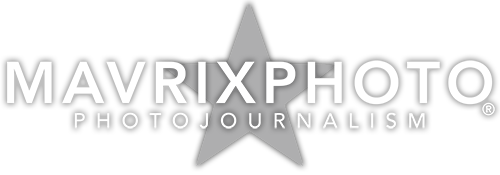All image and video purchase and celebrity photo agency licensing inquiries should be directed to…
News And Celebrity Photo Agency
Tel: (323) 573-7244 or (305) 542 9275
Email: sales@mavrixphoto.com
Click here to apply for a login to our archive now!
Photojournalism is distinguished from other close branches of photography (e.g.documentary photography, social documentary photography,street photography or celebrity photography Celebrity Photo Agency) by complying with a rigid ethical framework which demands that the work be both honest and impartial whilst telling the story in strictly journalistic terms. Photojournalists create pictures that contribute to the news media, and help communities connect with one other. Photojournalists must be well informed and knowledgeable about events happening right outside their door. They deliver news in a creative format that is not only informative, but also entertaining.
Like a writer, a photojournalist is a reporter, but he or she must often make decisions instantly and carry photographic equipment, often while exposed to significant obstacles (e.g., physical danger, weather, crowds, physical access). The practice of illustrating news stories with photographs was made possible by printing and photography innovations that occurred in the mid 19th century. Although early illustrations had appeared in newspapers, such as an illustration of the funeral of Lord Horatio Nelson in The Times (1806), the first weekly illustrated newspaper was the Illustrated London News, first printed in 1842.
The illustrations were printed with the use of engravings. The “Golden Age of Photojournalism” is often considered to be roughly the 1930s through the 1950s.It was made possible by the development of the compact commercial 35mm Leica camera in 1925, and the first flash bulbs between 1927 and 1930, which allowed the journalist true flexibility in taking pictures. Until the 1980s, most large newspapers were printed with turn-of-the-century “letterpress” technology using easily smudged oil-based ink, off-white, low-quality “newsprint” paper, and coarse engraving screens. While letterpresses produced legible text, the photoengraving dots that formed pictures often bled or smeared and became fuzzy and indistinct.
In this way, even when newspapers used photographs well — a good crop, a respectable size — murky reproduction often left readers re-reading the caption to see what the photo was all about. The Wall Street Journal adopted stippled haircuts in 1979 to publish portraits and avoid the limitations of letterpress printing. Not until the 1980s did a majority of newspapers switch to “offset” presses that reproduce photos with fidelity on better, whiter paper.
The National Press Photographers Association (NPPA) was founded in 1946 in the U.S., and has about 10,000 members. Others around the world include the British Press Photographers Association (BPPA) founded in 1984, then relaunched in 2003, and now has around 450 members. Hong Kong Press Photographers Association (1989), Northern Ireland Press Photographers Association (2000), Pressfotografernas Klubb (Sweden, 1930), and PK— Pressefotografenes Klubb (Norway).
A new style of magazine and newspaper appeared that used photography more than text to tell stories. The Berliner Illustrirte Zeitung was the first to pioneer the format of the illustrated news magazine. Beginning in 1901, it began to print photographs inside the magazine, a revolutionary innovation. In the successive decades, it was developed into the prototype of the modern news magazine.
It pioneered the photo-essay, had a specialized staff and production unit for pictures and maintained a photo library. It also introduced the use of candid photographs taken with the new smaller cameras.
The magazine sought out reporters who could tell a story using photographs, notably the pioneer sports photographer Martin Munkácsi, the first staff photographer, and Erich Salomon, one of the founders of photojournalism.
Other magazines reportedly included, Arbeiter-Illustrierte-Zeitung (Berlin), Vu (France), Life (USA), Look (USA), Picture Post (London) and newspapers, The Daily Mirror (London) and The New York Daily News. Famous photographers of the era included Robert Capa, Romano Cagnoni, Alfred Eisenstaedt, Margaret Bourke-White and W. Eugene Smith.
Henri Cartier-Bresson is held by some to be the father of modern photojournalism, although this appellation has been applied to various other photographers, such as Erich Salomon, whose candid pictures of political figures were novel in the 1930s.
The photojournalism of, for example, Agustí Centelles played an important role in the propaganda efforts of the Republican side in the Spanish Civil War in the late 1930s.
In Migrant Mother Dorothea Lange produced the seminal image of the Great Depression. The FSA also employed several other photojournalists to document the depression.
American journalist Julien Bryan photographed and filmed the beginning of the Second World War being under heavy German bombardment in September 1939 in Poland. He was pioneer worker in color photography, Kodachrome.
William Vandivert reportedly photographed in color the German bombardment of London called the Blitz in 1940.
Soldier Tony Vaccaro is also recognized as one of the pre-eminent photographers of World War II. His images taken with the modest Argus C3 captured horrific moments in war, similar to Capa’s Spanish soldier being shot. Capa himself was on Omaha Beach on D-Day and captured pivotal images of the conflict on that occasion. Vaccaro is also known for having developed his own images in soldier’s helmets, and using chemicals found in the ruins of a camera store in 1944. Text courtesy of Wikipedia.
